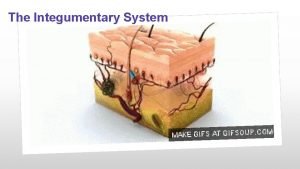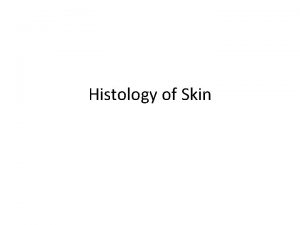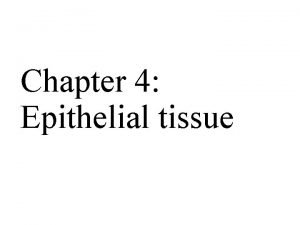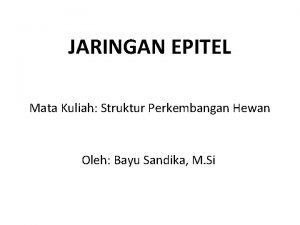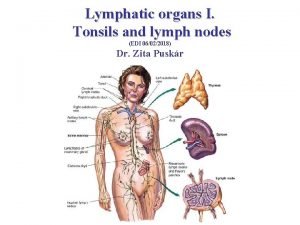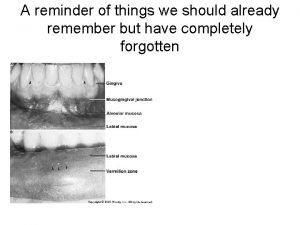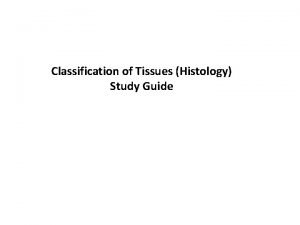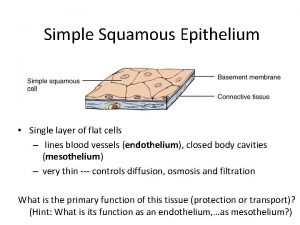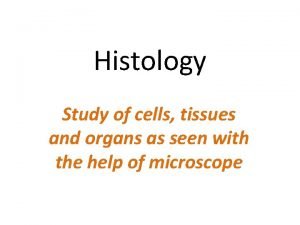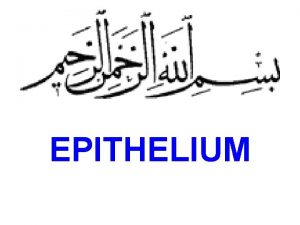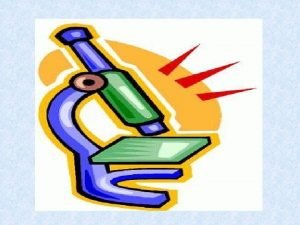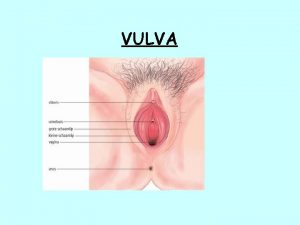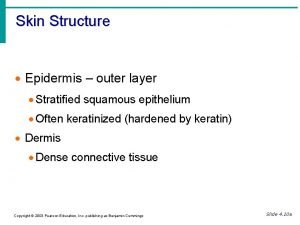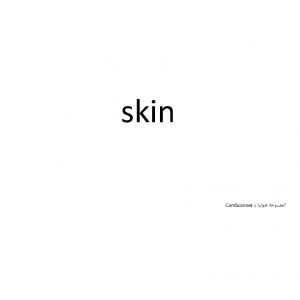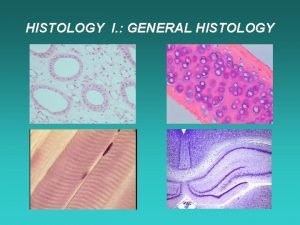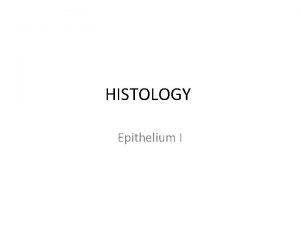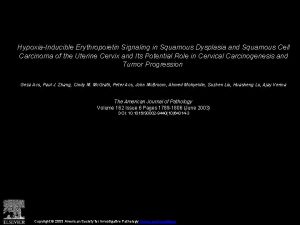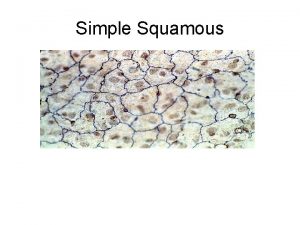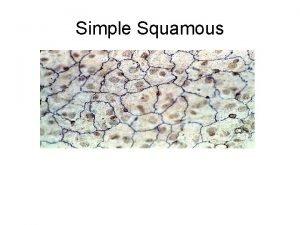Histology of Skin Notes Thin skin Stratified squamous











- Slides: 11

Histology of Skin

Notes Thin skin Stratified squamous epithelium Dermis Sebaceous glands Sweat gland Hair follicle

Notes Thick skin Keratin Stratified squamous epithelium Dermis Dermal papilla Sweat gland Epidermis

Thin skin: It has mainly two parts. They are epidermis and dermis Epidermis: It consists of stratified squamous keratinised epithelium. From deep to superficial it is made up of the following layers. 1. Stratum basale: It is the deepest layer of columnar cells resting on the basement membrane with some melanocytes in between. 2. Stratum spinosum: It is made up of 3 -7 layers of polygonal cells, which are attached to each other.

3. Stratum granulosum: Consists of 2 -3 layers of diamond shaped cells with deeply stained granules. These are keratohyalin granules. 4. Stratum lucidum: A layer of flattened ill-defined cells without nuclei. They contain eleidin granules. 5. Stratum corneum: Here cells are flat and cornfied. A protein called keratin replaces the cytoplasm and the nuclei. Dermis: It consists of outer papillary and inner reticular layers.

Papillary layer: It is usually uneven and projects into the papillae between the ridges on the deep surface of the epidermis. These papillae may be primary or secondary in nature. This layer is thin and is made up of collagen and elastic fibers with lymphocytes and plasma cells, capillaries and nerve endings. Reticular layer: It consists of dense irregular connective tissue with lymphocytes, fat cells, capillaries, lymphatics and nerve fibers.

Appendages of thin skin: Hair follicles and hair: These are follicular invaginations of epidermal epithelium. They extend into dermis and are surrounded by connective tissue of dermis. The root of the hair is attached to the bulb like terminal expansion of the follicle. The root continues as the shaft of the hair, the free end of the shaft protrudes beyond the surface of epidermis. Sebaceous glands: These are holocrine type of glands found closely associated with hair follicles. The secretions of these glands open by ducts into the upper 1/3 of hair follicles. The secretory units of the glands are rounded sacs lined by single layer of epithelial cells.

Arrector pili muscles: These are bands of smooth muscle fibers. Its one end is attached to the papillary layer of the dermis and the other end into the connective tissue sheath of hair follicle. Sweat glands: They are found all along the dermis. These are simple coiled tubular glands with secretory and conducting parts. The secretary part is a simple convoluted tube lined by columnar cells. Stratified columnar cells line the conducting part or duct. It passes through the dermis and opens into the epidermis. Nails: These are made up of hard keratin.

Thick skin: It has mainly two parts. They are epidermis and dermis Epidermis: It consists of stratified squamous keratinised epithelium. From deep to superficial, it is made up of the following layers. 1. Stratum basale: It is the deepest layer of columnar cells resting on the basement membrane with some melanocytes in between. 2. Stratum spinosum: It is made up of 3 -7 layers of polygonal cells, which are attached to each other. 3. Stratum granulosum: Consists of 2 -3 layers of diamond shaped cells with deeply stained granules. These are keratohyalin granules.

4. Stratum lucidum: A layer of flattened ill-defined cells without nuclei. They contain eleidin granules. 5. Stratum corneum: It is a very prominent and highly thickened layer. Here the cells are flat and cornfied. A protein called keratin replaces the cytoplasm and the nuclei. Dermis: It consists of outer papillary and inner reticular layers. Papillary layer: It is usually uneven and projects into the papillae between the ridges on the deeper surface of the epidermis. These papillae may be primary or secondary in nature. This layer is thin and is made up of collagen and elastic fibers with lymphocytes and plasma cells, capillaries and nerve endings.

Reticular layer: It consists of dense irregular connective tissue with lymphocytes, fat cells, capillaries, lymphatics and nerve fibers. Appendage of thick skin: Sweat glands: They are found all along the dermis. These are simple coiled tubular glands with secretory and conducting parts. The secretary part is a simple convoluted tube lined by columnar cells. Stratified columnar cells line the conducting part or duct. It passes through the dermis and opens into the epidermis.
 Stratified squamous epithelium in skin
Stratified squamous epithelium in skin Thin skin histology
Thin skin histology Zonula occludens
Zonula occludens Stratified squamous epithelium adalah
Stratified squamous epithelium adalah Venule
Venule Layers of epithelial tissue
Layers of epithelial tissue Orthokeratinized stratified squamous epithelium
Orthokeratinized stratified squamous epithelium Keratinized stratified squamous epithelium
Keratinized stratified squamous epithelium Dense regular connective tissue tendon
Dense regular connective tissue tendon Stratified squamous epithelium
Stratified squamous epithelium Where is the simple columnar epithelium located
Where is the simple columnar epithelium located Pseudostratified columnar epithelium in trachea
Pseudostratified columnar epithelium in trachea
